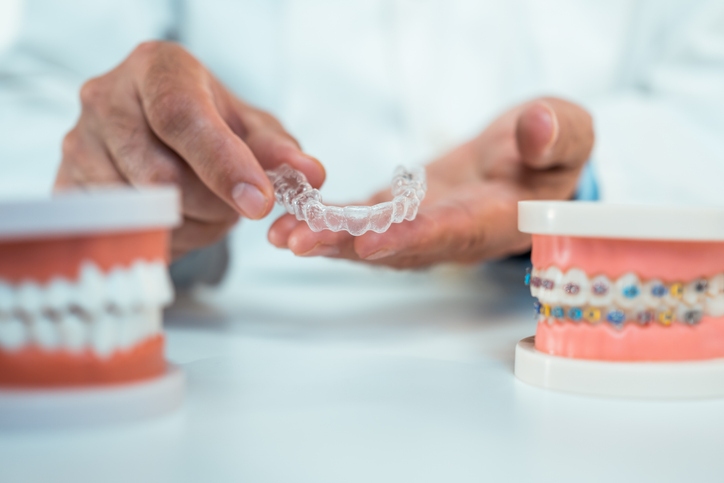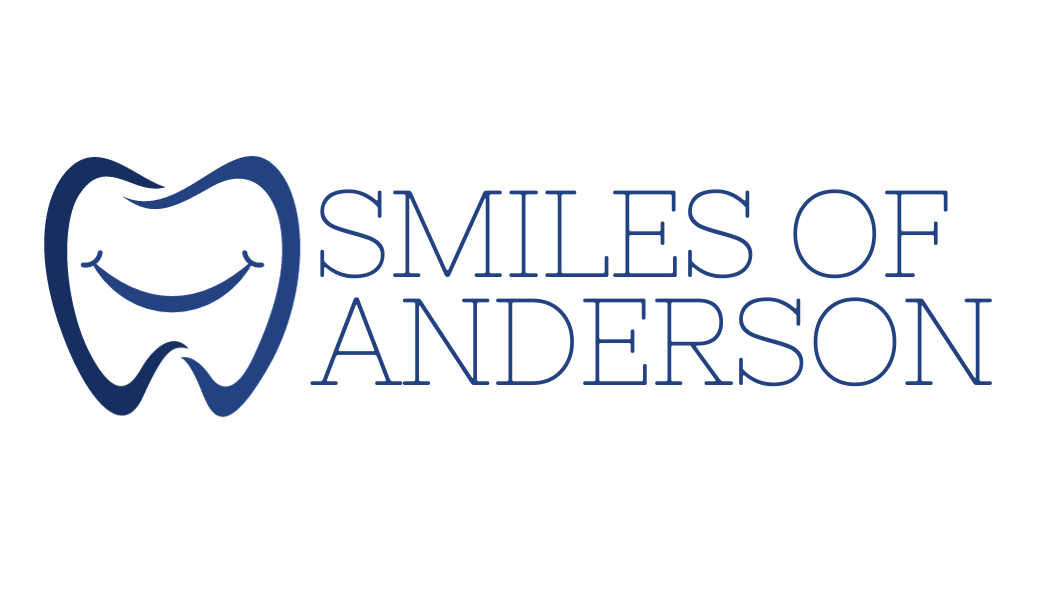Invisalign vs. Traditional Braces: Pros and Cons
Comparing Invisalign and Traditional Braces Pros and Cons
Choosing between Invisalign and traditional braces can feel overwhelming. Both options help straighten teeth and create beautiful smiles. Each treatment has unique benefits that work better for different people. Your lifestyle, budget, and specific dental needs all play important roles in this decision. Understanding the differences between these orthodontic treatments helps you make the right choice for your smile. Trust the team at Smiles of Anderson to help you explore both options before deciding. We’re here to support the Anderson, IN community in all their dental health needs.

What Is Invisalign?
Invisalign treatment uses clear, removable aligners to move your teeth into proper position gradually. These custom-made trays fit snugly over your teeth and apply gentle pressure to shift them. You wear each set of aligners for about two weeks before switching to the next set in your treatment series. The aligners are nearly invisible when worn, making them popular with adults and teens. Most people wear their aligners for 20-22 hours each day for the best results. Treatment typically takes 12-18 months, depending on your specific needs.
What Are Traditional Braces?
Traditional braces use metal brackets and wires to straighten teeth over time. Your orthodontist connects the brackets to each tooth with an arch wire. Regular adjustments tighten the wire, which applies pressure to move your teeth. Modern braces are smaller and more comfortable than older versions. You can choose different colored bands to personalize your look. The brackets stay on your teeth throughout the entire treatment period. Most people wear traditional braces for 18-24 months. Regular oral health appointments ensure your treatment stays on track for optimal results.
Invisalign Pros and Cons
Invisalign offers several advantages that appeal to many patients. The clear aligners provide a discreet way to straighten your teeth. You can remove them for important meetings, dates, or photos. The benefits and drawbacks of Invisalign include:
- Nearly Invisible: Transparent plastic makes the aligners hard to notice during conversations.
- Removable Convenience: Take them out for eating, drinking, and special events and put them back in for use with ease.
- Easy Cleaning: Brush and floss normally without working around metal brackets or worrying about food particles.
- Comfortable Fit: Smooth plastic eliminates cuts and scrapes inside your mouth.
- Dedication: Invisalign requires discipline to wear them consistently. Being able to remove them easily may make this harder.
- Suitability: Some complex cases may need traditional braces instead. Their cost can be higher than that of braces as well.
Pros and Cons of Traditional Braces
Traditional braces work effectively for all types of orthodontic problems. They provide precise control over tooth movement, making them ideal for complex cases. The brackets stay attached to your teeth, so you can’t forget to wear them. The advantages and disadvantages of traditional braces typically include:
- Always Working: Fixed brackets mean constant tooth movement progress.
- Handles Complex Cases: Severe crowding or bite issues respond well to braces.
- Insurance Coverage: Many plans offer more complete coverage for traditional orthodontics compared to clear aligners.
- Cost-Effective: Generally, traditional braces are less expensive than Invisalign treatment options.
- Noticeable Appearance: The metal appearance may concern some patients, and their noticeability can impact self-confidence.
- Restricted Diet: Food restrictions help protect the brackets and wires during treatment but can be inconvenient.
Which Is Better: Invisalign or Braces?
The best choice depends on your specific situation and preferences. Invisalign works well for mild to moderate alignment issues. Adults and teens who value appearance often prefer clear aligners. People with busy social or professional lives appreciate the removable feature. Traditional braces handle more complex orthodontic problems effectively. They work better for severe crowding, significant bite issues, or rotated teeth. Your orthodontist will examine your teeth and discuss your goals, as well as which option is best for your health. Both provide beautiful, healthy smiles when used properly. The right choice is often the one that fits your needs and helps you stick to your treatment plan.
FAQs About Invisalign and Traditional Braces
When it comes to understanding Invisalign, it’s normal to have questions. Some of the most frequent questions we’re asked include:
- How long does each treatment take? Invisalign typically takes 12-18 months, while traditional braces usually require 18-24 months. Your specific case determines the exact timeline.
- Can I eat normally with both options? Invisalign allows normal eating since you remove the aligners. Traditional braces require avoiding hard, sticky, or chewy foods that might damage the brackets.
- Which option costs more? Invisalign generally costs more than traditional braces. However, many dental practices offer financing plans to make both options affordable.
- Do both options hurt? Both treatments may cause mild discomfort when adjustments occur. Most patients find the soreness manageable and temporary.
Start Your Smile Transformation Today
Both Invisalign and traditional braces can give you the straight, healthy smile you deserve. The experienced team at Smiles of Anderson helps families choose the right orthodontic treatment for their needs. Advanced technology and personalized care ensure comfortable, effective results. Schedule a visit today to discuss your options and learn which treatment works best for your lifestyle. Your perfect smile is closer than you think!
